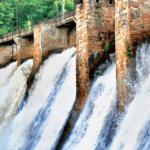The annual budget tabled for FY 2016-17 does little to impress or inspire. Instead of embracing and paving the way for market oriented reforms, the proposed budget has instead opted for distributive economics significantly hiking up expenditure targets against a backdrop of historically low spending capacity and worse still, without prudent actionable agenda on improving capital spending.
Old Wine in New Bottle
The budget is starkly reminiscent of the mindset and policy choices of the socialist coalitions of the 90s—led by the then form of the CPN-UML—which squandered away the opportunity to build upon the first generation of economic reforms and project the country towards a high growth trajectory.
Instead of the economic priorities, political ones seem to have taken precedence in the budget which reads more like a manifesto than a country’s annual fiscal plan. Reading between the lines and numbers, it is easy to figure out that politically affiliated syndicates and cartels’ interests have been secured.
Learn from Peers
Among Nepal’s peers in the developing world, there are examples of countries whose budgetary allocation are similar to that of Nepal’s for 2016-17 but have considerably larger capital expenditure component compared to recurrent expenditure. Ethiopia, which had a national budget close to around USD 11 billion for the 2015-16, allocated around USD 4.1 billion for capital expenditure and around USD 2.5 billion for recurrent expenditure. The country’s revenue target of around USD 5.6 billion is expected to be achieved by the end of the fiscal whereas the economy is projected to grow by 10.5%. Cote d’Ivoire’s experience has been similar as well. Spending efficiently, delivers results.
Contrast that to Nepal’s performance. In FY 2015-16, the budget had set a total revenue target of 475 billion (USD 4.4 billion) but as of May 20, 2016, with just a little under two months left to go in the year, total capital spending stood at a woeful 48.3 billion (USD 451 million). As of the same date, total revenue collected was greater than total expenditure despite the fact that the targeted total expenditure was 1.7 times larger than the targeted total revenue. And, in the upcoming year the government has set the revenue collection target at 682.8 billion (USD 6.3 billion).
While it is true that FY 2015-16 was fraught with multiple challenges which stymied proper execution of the budget despite it being declared as ‘Budget Implementation Year’, the challenges in the past years have been similar if not of the same magnitude. Nepal must, therefore, prioritize and expedite capital expenditure.
There is a need for comprehensive reforms in the entire budgetary procedure, from planning to execution. Large spending on recurrent expenditures with covert political agenda will only undermine fiscal stability in the long run as subsequent governments will be tempted to follow suit. So long as the budget is used indiscriminately as self-serving machination without prudent policy prioritization, it cannot allocate resources efficiently and high growth rates will remain elusive.
Tejeshwi served as a NEF Fellow during 2015-16. He has a master’s degree in international economic policy from SciencesPo – Paris School of International Affairs and has previously worked at the International Labour Organisation’s Regional Office for Asia and the Pacific covering areas such as labour market policies, wages and employment, future of work, leveraging technology as a driver of formality, and labour force surveys for countries in the Asia Pacific region. At present, he works as an economist at the Embassy of Switzerland in Nepal supporting the employment and income domain of Swiss Cooperation in Nepal with a focus on private sector development, innovative development finance, and SME-led growth. Tejeshwi also serves as the focal point for Swiss-Nepal trade and investment relations promoting greater cross-border economic cooperation.





